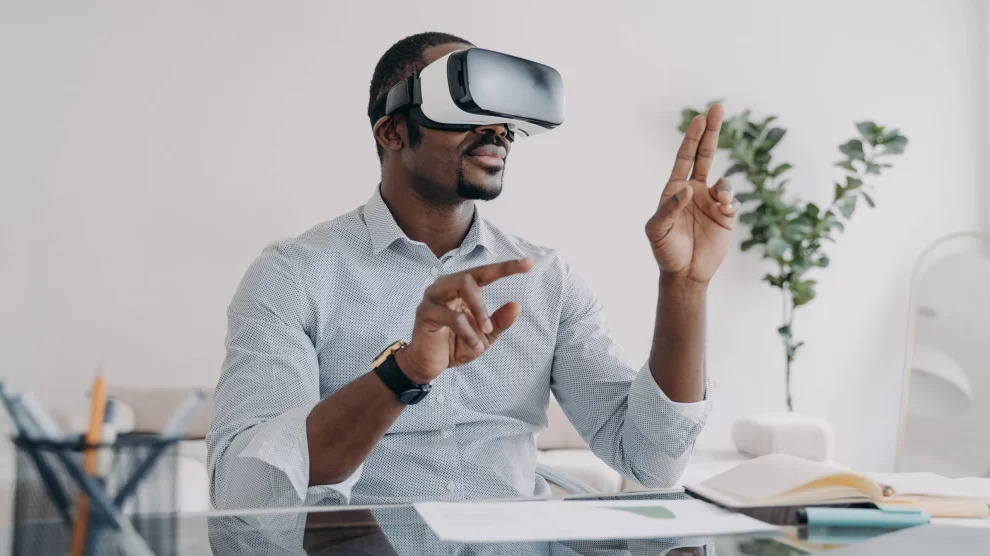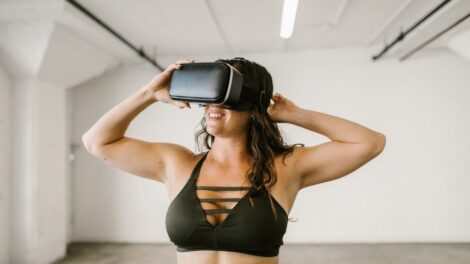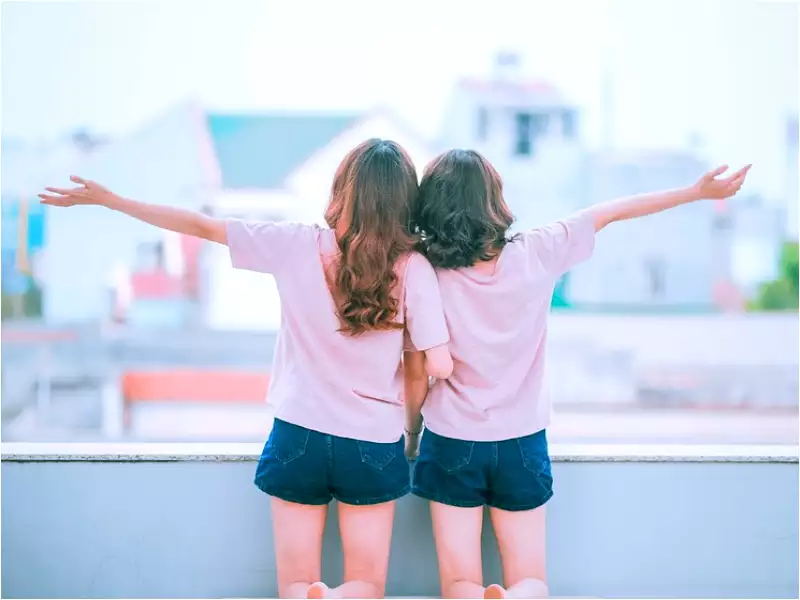The intersection of technology and wellness has always been an exciting space—whether it’s using apps to track your mood, gadgets to monitor your sleep, or AI-guided meditation sessions. But over the past few years, Virtual Reality (VR) has pushed boundaries in ways we couldn’t have imagined before. From immersive mental health therapies to full-body workouts in fantastical worlds, VR is now redefining how we explore not only fitness, but also sensuality, relationships, and even spirituality.
One of the most fascinating and fast-growing segments in this domain is Erotic VR yoga, which combines mindful movement with sensual self-discovery, all within a safe and customizable virtual environment. Platforms like BraindanceVR are leading this charge, offering unique VR experiences that empower users to explore the union of body, breath, and desire. And it’s not just a novelty—it’s part of a larger shift in how we understand intimacy and self-care in the digital age.
The Rise of VR Wellness Experiences
Wellness is no longer confined to yoga mats, gym floors, or meditation retreats. With VR headsets becoming more accessible, users are finding new ways to relax, rejuvenate, and reconnect—often from the comfort of their own homes. This technology allows people to:
- Engage in guided meditation on a serene beach,
- Participate in virtual group fitness classes,
- Or even experience immersive sound therapy and breathwork.
The realism and emotional impact of these experiences are striking. VR wellness taps into visual, auditory, and sometimes even haptic feedback to help users achieve deeper states of relaxation and focus. And for those seeking more personalized, sensual, or exploratory forms of wellness, the possibilities are virtually limitless.
Merging Yoga and Sensuality in Virtual Reality
Yoga has always been about union: of mind and body, of breath and movement, of self and surroundings. Adding a layer of sensual or erotic experience to yoga isn’t new—in fact, ancient tantric practices from India have long celebrated the blending of spirituality and physical pleasure.
What VR brings to the table is the ability to guide users through sensual yoga flows in safe, non-judgmental, and highly customizable environments. Whether someone is exploring self-touch, practicing intimate movement, or deepening their breath in synchrony with a virtual partner or instructor, the experience becomes more immersive and engaging in 3D space.
This blend of eroticism and yoga within VR helps users:
- Explore their bodies and boundaries,Cultivate self-confidence and acceptance,
- And reduce anxiety or shame around pleasure.
For people recovering from trauma, navigating long-distance relationships, or simply looking for deeper solo self-care rituals, this form of VR can be deeply empowering.
Breaking Taboos Around Pleasure and Mental Health
One of the biggest benefits of erotic VR yoga is how it helps dismantle shame and taboos around sensuality and self-pleasure. Society often separates physical pleasure from “serious” wellness practices—but mental and sexual health are closely intertwined. Exploring sensuality through a mindful lens can boost:
- Body positivity
- Stress relief
- Emotional intimacy
- Hormonal balance
For example, slow, breath-focused movement in combination with sensual exploration can activate the parasympathetic nervous system—the body’s natural relaxation response. This makes erotic VR yoga not just a fantasy experience, but a legitimate wellness tool that helps calm the nervous system and foster deeper emotional regulation.
The Role of Consent and Control in VR
What sets VR experiences apart from traditional media is the user’s sense of agency. You’re not just watching—you’re actively participating, choosing your path, and setting your own boundaries.
This is especially important in experiences involving intimacy or sensuality. In an erotic VR yoga session, the user can often choose the environment (beach, forest, private room), the instructor’s voice or body type, the level of interaction, and whether they want guided touch or just quiet companionship. This level of consent and control is crucial for:
- People healing from past trauma
- LGBTQ+ individuals exploring identity safely
- Anyone who wants a personalized, non-performative space for intimacy
The private, customizable nature of VR creates a safe zone for exploration. Users can pause, rewind, or adjust experiences in real-time, building trust and comfort.
Relationship Benefits: Solo and Together
Erotic VR yoga isn’t just for solo use. Couples in long-distance relationships, or even those seeking new ways to connect at home, can benefit from shared VR sessions. Some platforms allow synced experiences, where two users enter the same virtual space and mirror each other’s movements, breathing, or guided touch.
For partners, this can:
- Reignite physical intimacy
- Build emotional closeness through shared vulnerability
- Provide a playful, low-pressure space to experiment with new things
And even for individuals who don’t have a partner, it offers a way to feel connected, cared for, and attuned to their own needs—both emotional and physical.
Why This Matters in a Post-Pandemic World
The pandemic changed how we connect, work, and care for ourselves. It also brought a wave of isolation, touch deprivation, and mental health challenges. As we rebuild social lives and relationships, tools like erotic VR yoga are filling a crucial gap in emotional and physical connection.
More people are prioritizing self-care, emotional honesty, and authentic connection—whether that’s with others or within themselves. Erotic VR yoga fits this evolving narrative: it’s about presence, not performance. It’s about reclaiming the body not just for aesthetics or health, but for pleasure and expression.
In a world that constantly pushes productivity and perfection, slowing down for sensual movement and self-exploration is an act of resistance—and of healing.
Challenges and Ethical Considerations
Of course, any emerging technology, especially one involving intimacy, comes with concerns:
- Data privacy – VR platforms that collect personal behavior data must have strict encryption and privacy policies.
- Content moderation – To ensure experiences are respectful, inclusive, and not exploitative.
- Access and inclusivity – Ensuring diverse body types, sexualities, and gender expressions are represented and respected in VR content.
- Addiction and dissociation – Like with all immersive tech, balance and intention are key.
Users should approach these experiences with self-awareness and moderation. Used intentionally, erotic VR yoga can be a beautiful tool—but it shouldn’t replace human connection or therapy when needed.
What the Future Looks Like
As VR tech continues to evolve—with better motion tracking, AI-driven personalization, and even haptic suits—the depth of these experiences will only grow. We might soon see:
- Biofeedback-based sessions that adapt based on your breathing or heart rate
- AI yoga instructors that learn from your posture and preferences
- Social VR classes with private breakout rooms for couples or solo exploration
- Integration with mental health platforms for trauma-informed sessions
And the conversation around pleasure will continue to shift—from something hidden or shameful to something mindful, celebrated, and healing.
Final Thoughts
We are only scratching the surface of what’s possible when you merge cutting-edge technology with age-old practices like yoga, touch, and breathwork. Erotic VR yoga is more than just a trend—it represents a powerful shift in how we understand wellness, intimacy, and the self.In a time when emotional connection and bodily autonomy are more important than ever, tools like these can help us feel more grounded, more present, and more alive—in both body and spirit.








